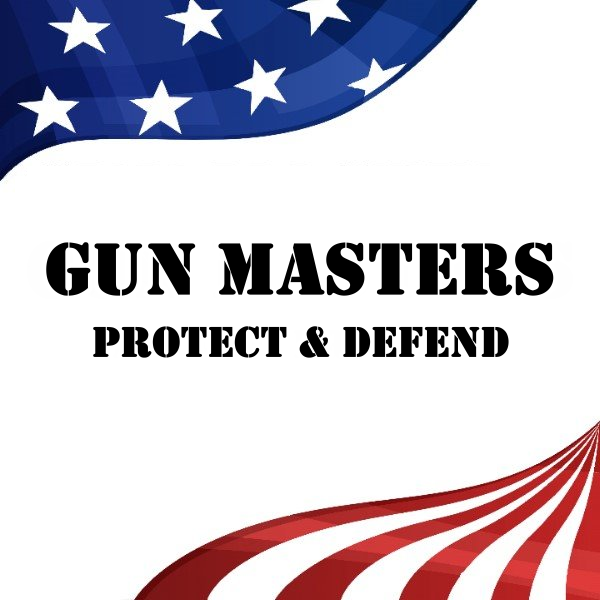
free shipping orders over $25
We’re having a 15% off sale on all our products. Enter your email below to be notified about future sales.


Non-lethal self-defense tools are devices designed to protect individuals from harm without causing permanent injury or fatal consequences to an attacker. These tools are specifically crafted to incapacitate, deter, or delay an assailant, giving the user enough time to escape or seek help. Unlike lethal weapons, such as firearms or knives, non-lethal tools prioritize personal safety while minimizing the risk of severe harm to others.
The importance of non-lethal options lies in their accessibility and ethical considerations. Many people are uncomfortable carrying lethal weapons due to the potential for irreversible consequences, both legally and morally. Non-lethal tools provide a safer alternative, empowering individuals to defend themselves without crossing the line into excessive force. Additionally, these tools are often easier to obtain and carry, as they are subject to fewer legal restrictions in most regions.
When comparing non-lethal tools to lethal weapons, several advantages stand out. Non-lethal tools are generally more affordable, require less training, and are less likely to escalate a dangerous situation. For example, while a firearm might deter an attacker, it also increases the risk of accidental injury or misuse. Non-lethal tools, on the other hand, are designed to neutralize threats without causing lasting harm, making them a practical choice for beginners and experienced users alike.
Non-lethal tools offer several compelling advantages for personal safety. One of the most significant benefits is the reduced risk of fatal harm. In high-stress situations, the use of lethal force can have life-altering consequences, both for the victim and the attacker. Non-lethal tools provide a way to protect oneself while avoiding the moral and legal complexities associated with lethal weapons.
These tools are particularly effective in scenarios where the goal is to escape rather than engage. For instance, a personal alarm can draw attention to a dangerous situation, deterring an attacker without physical confrontation. Similarly, pepper spray can temporarily incapacitate an assailant, allowing the user to flee to safety. Non-lethal tools are also ideal for individuals who may not have the physical strength or training to rely on hand-to-hand combat.
Despite their effectiveness, non-lethal tools are sometimes underestimated. A common misconception is that they are not powerful enough to stop an attacker. However, when used correctly, tools like stun guns or expandable batons can be highly effective in neutralizing threats. The key is understanding how to use these tools properly and pairing them with situational awareness and basic self-defense techniques.
Pepper spray is one of the most popular and widely used non-lethal self-defense tools. It works by releasing a concentrated spray of capsaicin, a chemical derived from chili peppers, which causes intense burning, temporary blindness, and difficulty breathing. This incapacitation gives the user time to escape. To use pepper spray effectively, aim for the attacker’s face, specifically the eyes and nose. Always check the expiration date and practice using the spray to ensure you can deploy it quickly in an emergency.
Pepper spray is compact and easy to carry, making it a convenient option for everyday use. Whether attached to a keychain or stored in a bag, it provides a quick and effective way to deter an attacker. Additionally, pepper spray is legal in most regions, though some areas may have restrictions on its strength or usage. Always familiarize yourself with local laws before purchasing or carrying pepper spray.
Personal alarms are small, portable devices that emit a loud, high-pitched sound when activated. The noise is designed to startle an attacker and attract attention from bystanders, potentially deterring the assailant. These alarms are easy to carry and can be attached to keychains, bags, or clothing. While they don’t physically incapacitate an attacker, their psychological impact can be significant, making them a valuable addition to any self-defense toolkit.
Personal alarms are particularly useful in crowded or urban areas where the sound is likely to draw immediate attention. They are also a great option for individuals who may not feel comfortable using physical self-defense tools. By creating a distraction, personal alarms can provide a critical window of opportunity to escape a dangerous situation.
Stun guns and Tasers are electrical devices that deliver a high-voltage shock to an attacker, causing temporary muscle incapacitation. While both tools serve a similar purpose, there are key differences. Stun guns require direct contact with the attacker, while Tasers can be used from a distance by firing prongs connected to wires. Proper usage and safety precautions are essential, as misuse can lead to accidental injury. Always familiarize yourself with the device’s operation and practice handling it in a controlled environment.
Stun guns and Tasers are highly effective when used correctly, but they do require a level of confidence and familiarity. Regular practice can help ensure that you can deploy these tools quickly and effectively in an emergency. Additionally, check local regulations, as some areas may have restrictions on the possession or use of stun guns and Tasers.
Self-defense keychains come in various forms, including kubotans, tactical pens, and knuckle-style tools. These compact devices are designed for close-quarters defense, allowing the user to strike or apply pressure to sensitive areas of an attacker’s body. For example, a kubotan can be used to target pressure points, while a tactical pen can double as a writing instrument and a self-defense tool. Training is crucial to ensure these tools are used effectively and responsibly.
Self-defense keychains are discreet and easy to carry, making them a practical choice for everyday use. They are particularly useful for individuals who may not feel comfortable carrying larger or more conspicuous self-defense tools. However, as with all self-defense devices, proper training and practice are essential to ensure their effectiveness.
Expandable batons are lightweight, telescoping rods that can be extended with a flick of the wrist. They are designed to provide a physical barrier between the user and an attacker, as well as a means of striking if necessary. While effective, batons require a certain level of strength and training to use properly. It’s also important to check local laws, as batons may be restricted in some areas.
Expandable batons are a versatile self-defense tool, offering both offensive and defensive capabilities. They can be used to create distance between you and an attacker or to deliver a powerful strike if needed. However, their effectiveness depends on the user’s ability to handle them confidently and responsibly. Consider taking a self-defense class to learn how to use an expandable baton effectively.
Selecting the right non-lethal tool depends on several factors, including your lifestyle, comfort level, and local regulations. Size and portability are critical considerations, as a tool that is too bulky or difficult to carry may be left at home when needed most. Ease of use is another important factor; beginners should opt for tools that are simple to operate under stress.
Your daily routine and environment also play a role in determining the best tool for you. For example, a jogger might prefer a lightweight personal alarm or pepper spray, while someone who frequently travels by car might find a stun gun more practical. Always research the legal status of your chosen tool in your area, as some devices may be restricted or require permits.
Once you’ve selected a tool, take the time to test and practice with it. Familiarity with your device can make all the difference in an emergency. Many manufacturers offer training guides or videos to help users build confidence and competence. For instance, practicing with pepper spray can help you understand its range and effectiveness, ensuring you can use it accurately when needed.
Non-lethal tools are most effective when combined with basic self-defense techniques. Situational awareness is the foundation of personal safety. By staying alert and recognizing potential threats, you can often avoid dangerous situations altogether. De-escalation tactics, such as maintaining a calm demeanor and using assertive communication, can also help diffuse conflicts before they escalate.
In cases where physical defense is necessary, simple techniques like striking vulnerable areas (e.g., eyes, nose, groin) can create an opportunity to escape. Non-lethal tools should be integrated into these strategies, serving as an extension of your self-defense plan. For example, using pepper spray to disorient an attacker before fleeing or employing a stun gun to create distance.
Training in basic self-defense techniques can enhance your confidence and ability to respond effectively in an emergency. Many self-defense classes incorporate the use of non-lethal tools, providing hands-on experience and practical advice. By combining these tools with situational awareness and physical techniques, you can create a comprehensive self-defense strategy.
Understanding the legal framework surrounding non-lethal tools is essential. Laws vary widely by region, and some tools may be prohibited or require permits. Research your local regulations to ensure compliance and avoid potential legal issues.
Safe storage and handling are equally important. Keep your tools in an easily accessible location, but out of reach of children or unauthorized users. Regularly inspect your devices to ensure they are in working order, and replace any expired or damaged components.
It’s also crucial to understand the legal consequences of using non-lethal tools in self-defense. While these tools are designed to minimize harm, their misuse can still result in legal repercussions. Familiarize yourself with the concept of "reasonable force" and consult local laws to ensure you are prepared to act responsibly.
Regular practice is key to using non-lethal tools effectively. Many self-defense classes and workshops offer training on how to handle these devices, as well as techniques for integrating them into real-life scenarios. Online tutorials and instructional videos can also be valuable resources for beginners.
Simulating real-life situations can help build confidence and prepare you for emergencies. Practice deploying your tool quickly and accurately, and consider role-playing scenarios with a trusted friend or instructor. The more comfortable you are with your device, the more likely you are to use it effectively under pressure.
For example, practicing with pepper spray can help you understand its range and limitations, ensuring you can use it effectively in a high-stress situation. Similarly, training with a stun gun or expandable baton can improve your ability to handle these tools confidently and responsibly.
While non-lethal tools are valuable, they are just one component of a comprehensive personal safety plan. Developing a safety strategy that includes communication, boundary-setting, and situational awareness can further enhance your security. For example, letting someone know your whereabouts or using safety apps to share your location can provide an added layer of protection.
Technology can also play a role in personal safety. Apps that send emergency alerts, track your location, or connect you with emergency services can be lifesaving in critical situations. Combining these tools with non-lethal devices creates a well-rounded approach to self-defense.
By integrating non-lethal tools like pepper spray into your overall safety plan, you can create a multi-layered approach to personal security. This combination of tools, techniques, and technology ensures you are prepared to handle a variety of situations, giving you greater confidence and peace of mind.